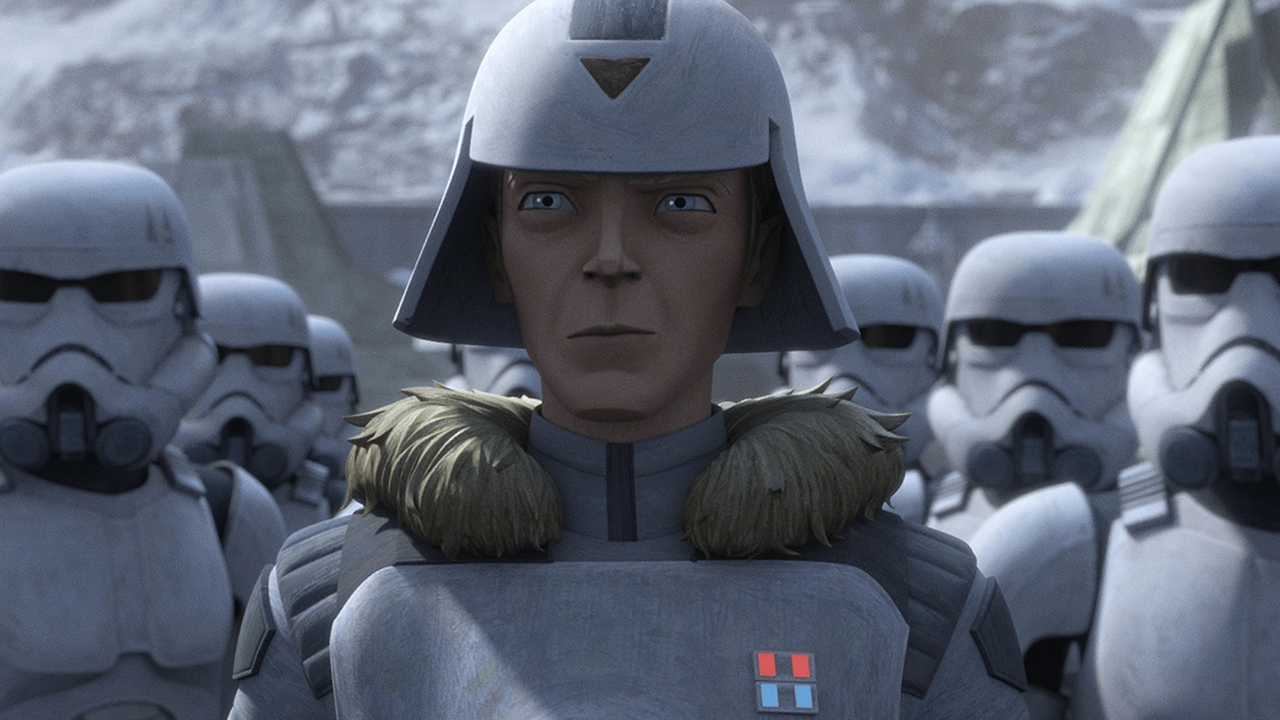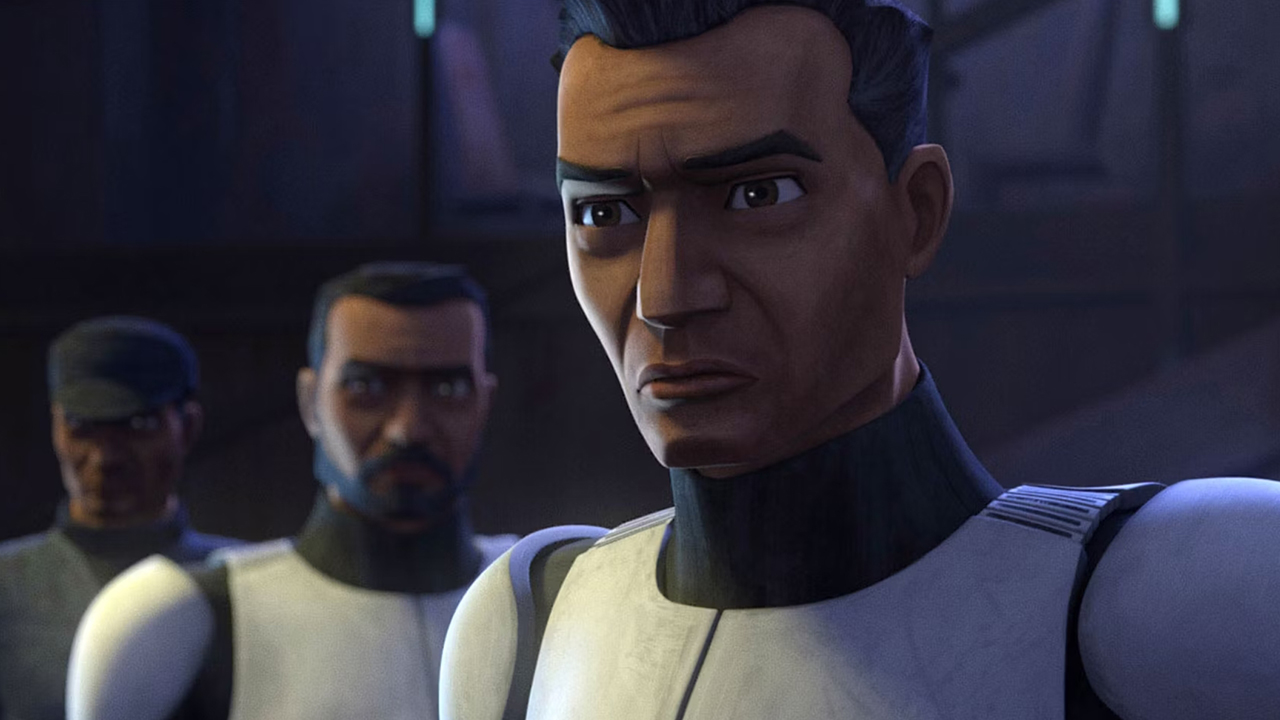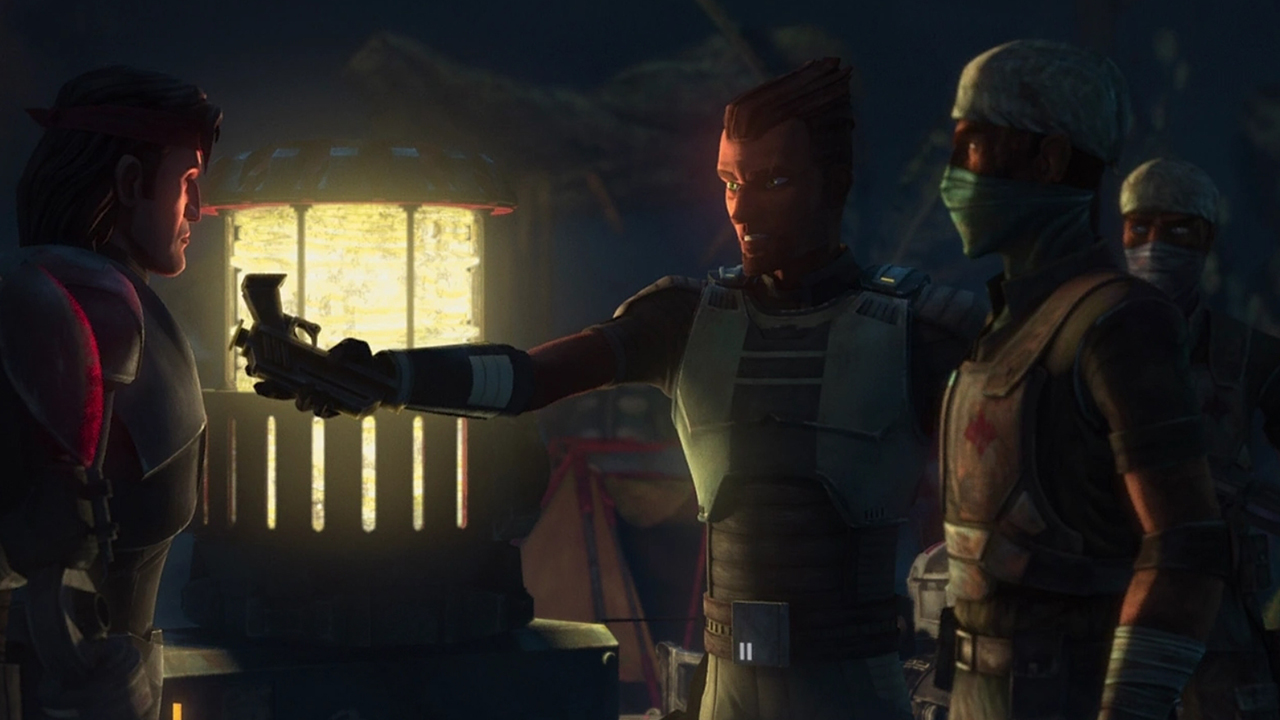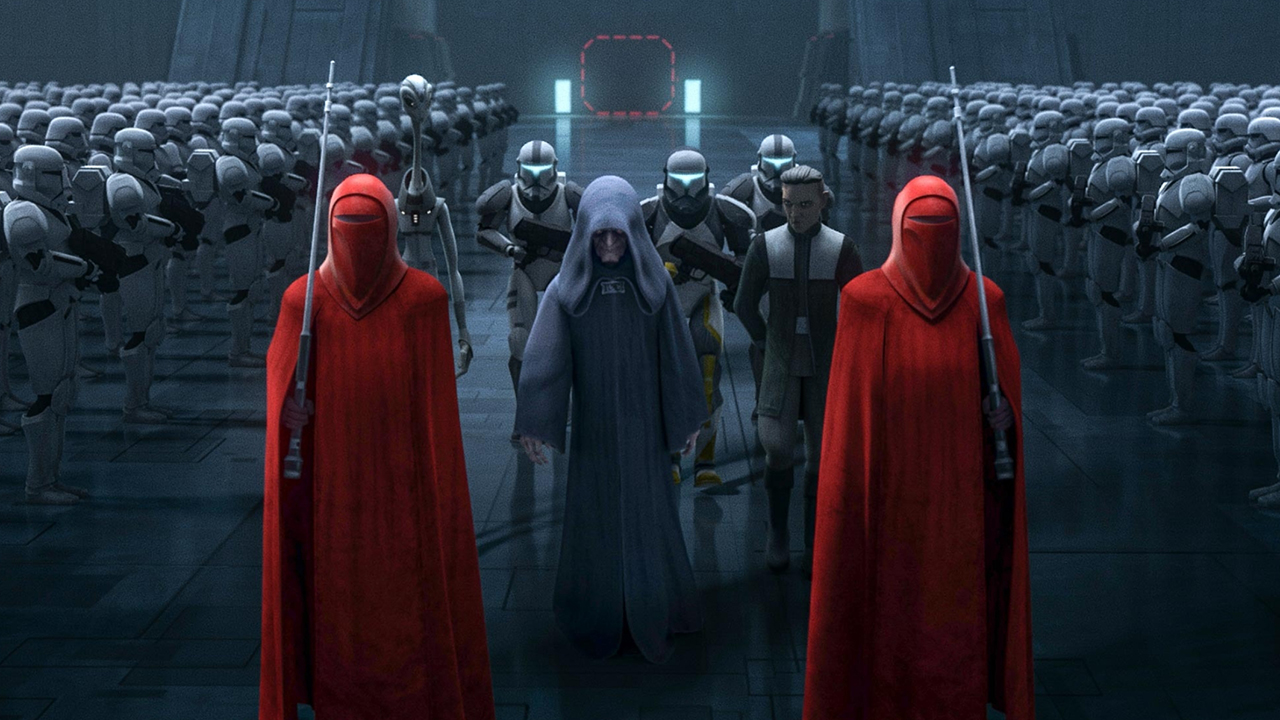
Now that the final season has finished, we figured it'd be the perfect time to sit down and talk about why The Bad Batch worked so well, both as a Clone Wars spinoff and a Star Wars series with a voice of its own.
After Clone Force 99 debuted in the final season of The Clone Wars and their spinoff show was rapidly announced, expectations weren't super high for yet another on-screen story about the Galactic Empire's reign of terror and oppression, an overdone point in the Star Wars timeline. There was, however, an interesting angle in telling the sudden transition from Republic to Empire through the eyes of clone troopers who had nowhere to go after the war they were created for ended. Were they anything other than soldiers who followed orders? What happened after there were no more orders to follow?
While the three-season series doesn't reach the heights of The Clone Wars and Rebels at their peak, it's undoubtedly an engrossing watch that gets heavier as the central plot progresses. Furthermore, it had a lot to add to the larger Star Wars mythos and helped paint a clearer picture of what truly went down after the fall of the Jedi Order. There are four points that deserve more attention in the conversations about the series, and we're breaking them down below.
Before we dissect some of The Bad Batch's best elements, we want to remind you that, on top of The Acolyte and Skeleton Crew, Disney Plus is also receiving a new four-part Lego Star Wars special this year. Moreover, gamers can spring into action with Star Wars: Hunters and Star Wars: Outlaws this summer.
Warning: Spoilers ahead for The Bad Batch (all seasons)
We finally saw the earliest days of the Galactic Empire

We all know how evil Emperor Palpatine's Empire was, but we never really saw on the screen (big or small) how it was born out of the ashes of the Republic. Revenge of the Sith depicts its earliest days, but its attention is elsewhere, on the main characters behind the galaxy-wide upheaval. Likewise, The Clone Wars' final arc presents Ahsoka and Captain Rex's struggle to combat their former battle brothers and escape the newly formed Empire. The Bad Batch, meanwhile, is the first-ever movie or show to truly capture what happened across the galaxy as the Republic was reformed into a Galactic Empire.
The Jedi series of video games, two of the best Star Wars games of all time, did a pretty great job of showing the Empire at its peak, long before Andor, Rogue One, and A New Hope happened — that is to say, the years before a proper Rebel Alliance was formed. Alongside Solo and the Obi-Wan Kenobi series, they do a great job of representing how bad things got under the Empire's iron fist. However, they didn't tell us how such a massive power structure was established across the galaxy. Just imagine the amount of manpower and resources needed to achieve even half of Palpatine's lofty goals.
In The Bad Batch, the three-season story was allowed to breathe and expand on the ground level of the Star Wars universe. Its first season specifically showed us a remarkably different side of the events surrounding Order 66 and the destruction of Kamino. After all the chaos and confusion, the transition from an army of clones to recruited troops was slow. Many senators, and entire systems, opposed such a sudden power play by Palpatine, no matter what his Jedi-related excuses were. It's one of the shakiest periods in the Star Wars continuity, and we still can't believe it took us this long to finally see it realized on our screens.
The fate of most clone troopers was explained

Chief among the Empire's most pressing issues was the matter of, as we just mentioned, swapping clones out for cheaper, human recruits from all over the vast galaxy. Thanks to a well-oiled propaganda machine, and by moving quickly on the population of Core and Mid-Rim worlds, the Empire was able to rapidly expand its ranks and take control of entire star systems before they could mount an organized resistance movement.
Meanwhile, clones that weren't high-ranking or commandos (who remained on board for a while as leaders for the inexperienced recruits) were pushed aside without any kind of retirement benefits. Of course, traitors to the Empire were persecuted and executed too. We're not kidding when we say one of the very best storylines in Bad Batch directly deals with clone troopers fighting for a pension plan and uncovering larger conspiracies along the way. Ultimately, most clones that didn't join rebel cells either became guns for hire or took on low-wage jobs wherever they could.
Organized rebellion wasn’t a thing until much later...

Another highlight of Star Wars: The Bad Batch, especially as the larger story progresses, is the fact that while we get to see proto-Rebels, there is a complete lack of organized rebellion and coordination between the insurgents. Many groups, including Saw Gerrera's enduring Partisans, were quick to take up arms against the Empire Yet, it all didn't coalesce into a Rebel Alliance until much, much later, as we saw in Andor and Star Wars Rebels.
The titular Bad Batch also struggles to fit in, constantly feeling conflicted over whether they should do more to fight the Empire or simply try to disappear and live calm lives for however long they have left (remember that regular clones age very fast). Money troubles often force them to take up criminal jobs, but their paths lead them time and again to old friends trying to make a difference and more dangerous missions that put them at risk.
In a refreshing change for Star Wars, the main group of characters – minus Tech, who dies during the season 2 finale – is able to leave war behind and settle down after they save Omega and other clones from the Empire's clutches. The larger Star Wars story is a generational thing and Omega, in the epilogue, chooses to continue to rebel against the Empire (potentially teasing a follow-up series), yet the original Bad Batch manages to find peace and become more than just soldiers. As we already knew, the galaxy would be fine without them.
It planted the seeds for Palpatine's resurrection

Omega is perhaps the series' most fascinating character. For starters, she's a female clone of Jango Fett originally and is raised by the Kaminoan scientist Nala Se to help her in Tipoca City. Later, we also learn she's one of the only two 'pure genetic copies' of Jango Fett, the other being the renowned bounty hunter Boba Fett (Alpha). With the brave Omega likely still roaming around after the Civil War ends, this opens up some interesting possibilities in regard to the Fett family.
We later learned Omega wasn't the only female clone created from Jango Fett; she had a sister in Emerie Karr, a clone scientist who chose to work for the Empire — though it seems that Omega is the only 'pure copy' the Empire could track down made her valuable in a way that Emerie wasn't. This leads into what gradually becomes the huge mystery in the back half of the series: Project Necromancer. This was a top-secret operation to 'crack' how to make Emperor Palpatine a backup body that can connect with midi-chlorians and, therefore, use the Force. Omega's creation held the key to successfully transferring the microscopic life forms into a cloned body.
The Rise of Skywalker showed us that this plan had been in the works for decades; the Sith Eternal cult on Exegol had struggled to create an adequate body for the phantom emperor — the emperor was able to transfer his spirit into a vessel that looked like him and could even use the Force, but wasn't strong enough to live on its own. Had Doctor Royce Hemlock succeeded on the planet Weyland, Sheev Palpatine's return would've been much faster and more dangerous. Much of his research did, however, survive and helped the Sith Eternal cult bring him back years later and after his Empire had disintegrated.
After The Mandalorian teased that the dark project was already in motion, and that some of the techniques used were also exploited by other Imperial warlords to brew their own megalomaniacal plans, this was the final piece of the puzzle we were missing. In true Star Wars fashion, poorly explained plot points are eventually developed elsewhere and we finally learn the how from "somehow, Palpatine has returned".







